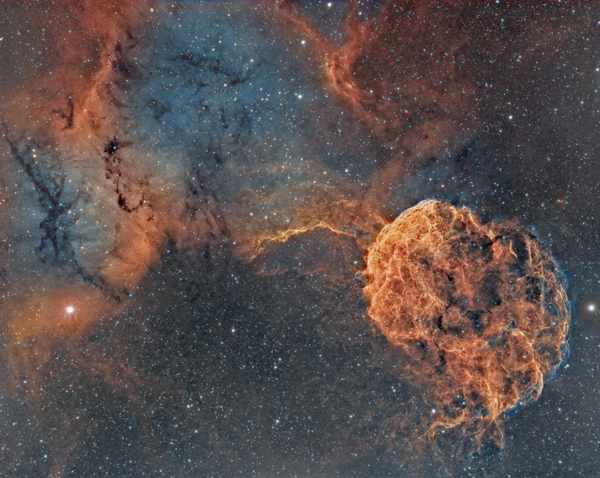The Jellyfish Nebula (IC 443) in Gemini
January 2022 - Picture of the Month

I don't have many supernova remnants (SNR) in Picture of the Month, the last was over three years ago, and it's a shame because they're spectacular objects. But I have a great example in the bottom-right of Sara's image: IC 443, also known as the Jellyfish Nebula because of those billowing folds.
IC 443 is about 5,000 light-years from us and is between 3,000 and 30,000 years old, spawned in a Type II supernova that also created pulsar CXOU J061705.3+222127. The nebula's distinctive shape is the result of interaction with an interstellar molecular cloud, whose variable density dictates the local structure and composition of the SNR. It's become something of a case study for shock chemistry in molecular clouds.
Positioned between μ and η Geminorum (at the extreme left and right respectively) it is easy to find the right location, but not so easy to see despite being 50 arc-minutes in diameter.
The section of IC 443 to the North-East is the brightest, and visual observation is possible, with an O-III or UHC filter being helpful. I've seen reports of success with telescopes from 8 inches and up, but to see much, bigger is definitely better. However success depends primarily on the quality of the sky: this is not a visual target for light polluted skies.
It is a splendid imaging target, though long exposures are necessary, and probably a good candidate for Electronically-Assisted Astronomy (EAA). This is especially true when combined with the glowing reflection nebula in the top-left corner of this image: IC 444 and its associated dark nebulae.
James Whinfrey - Website Administrator.